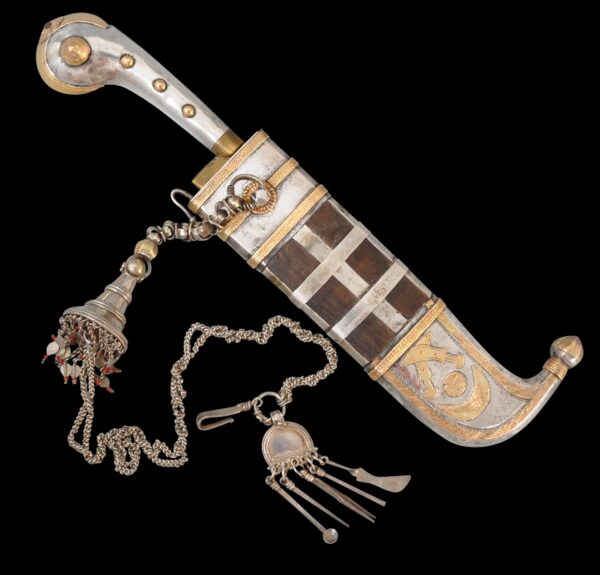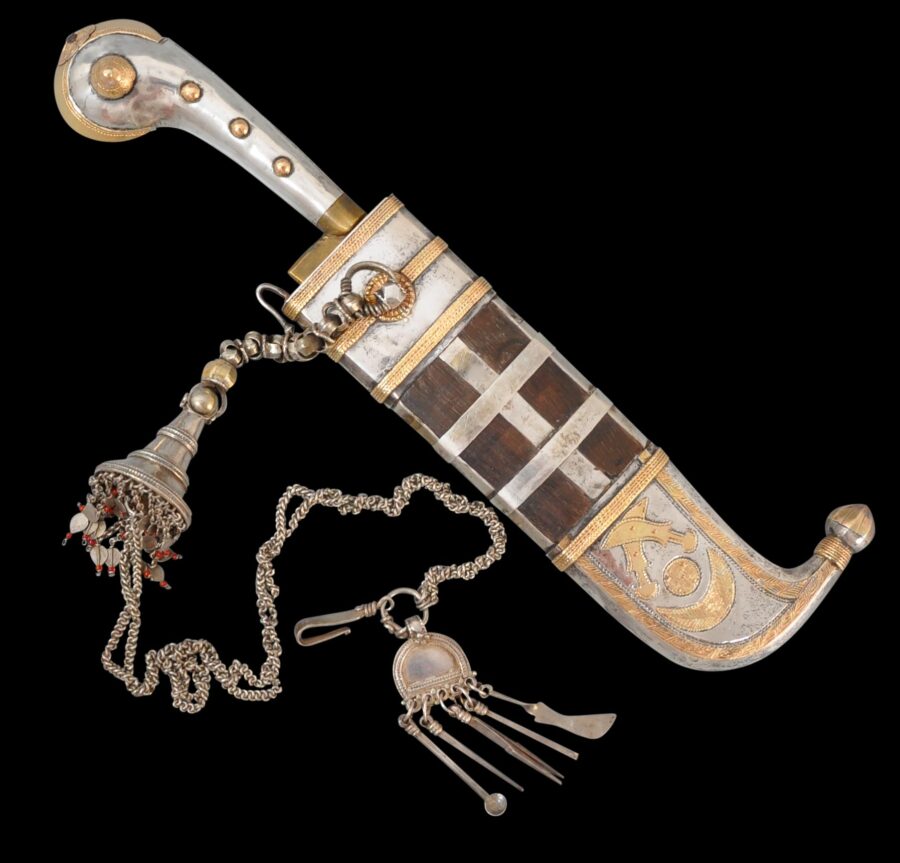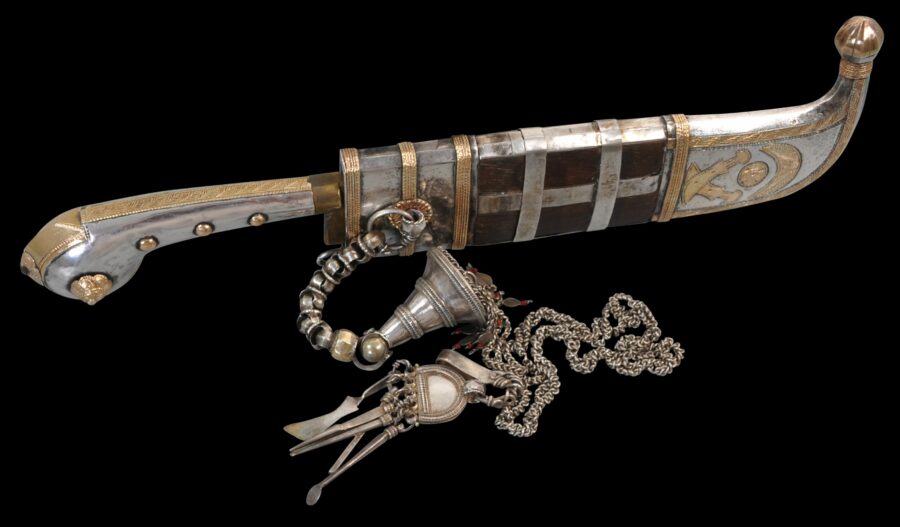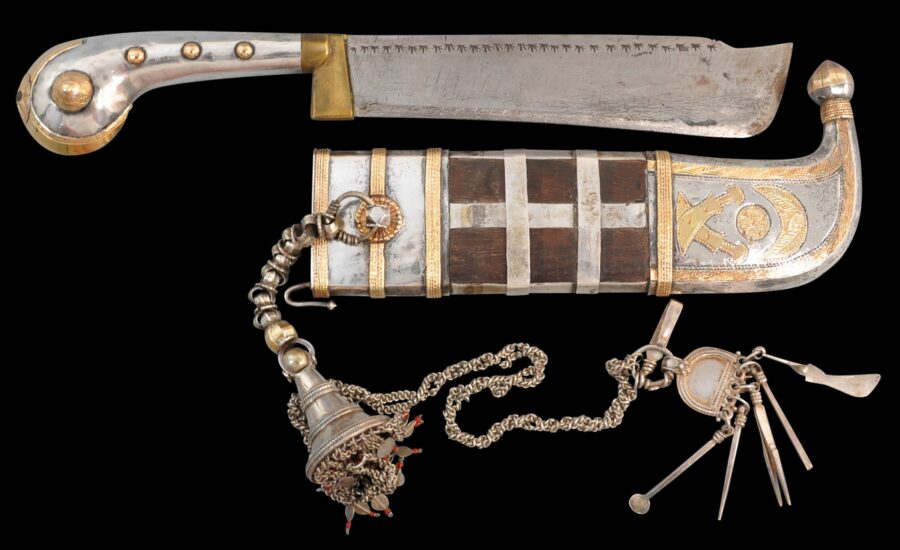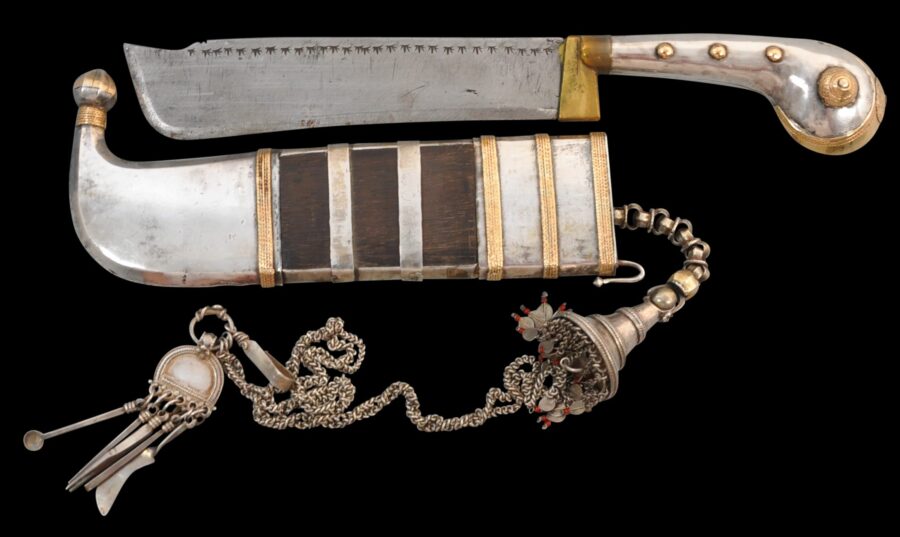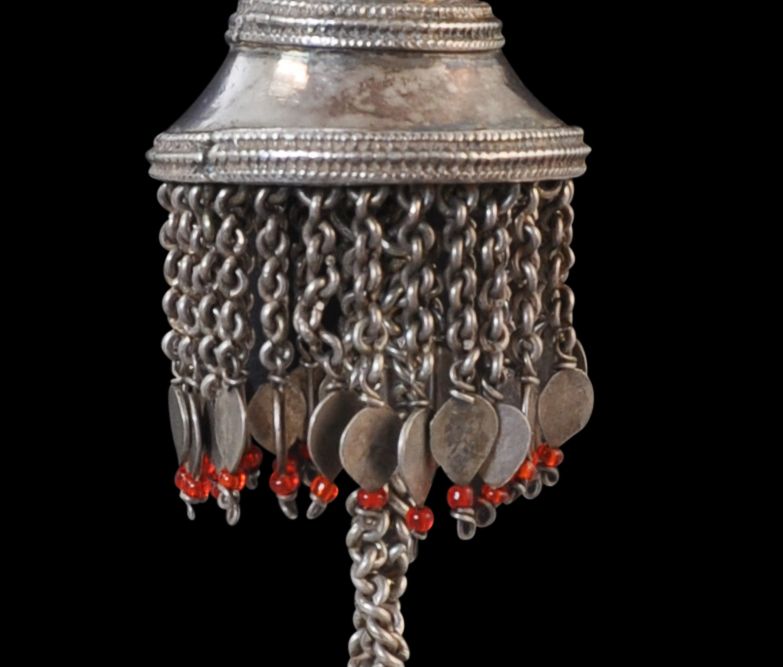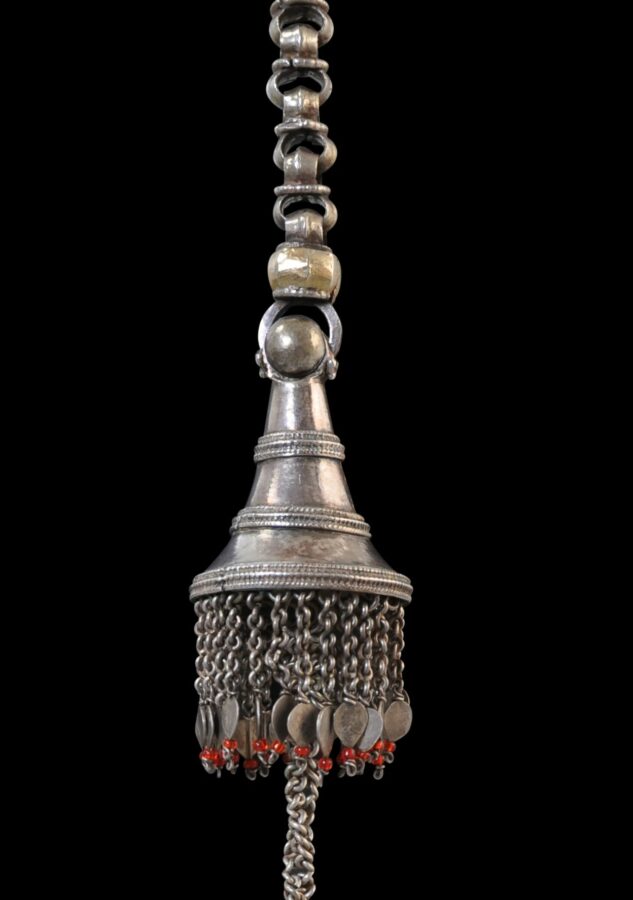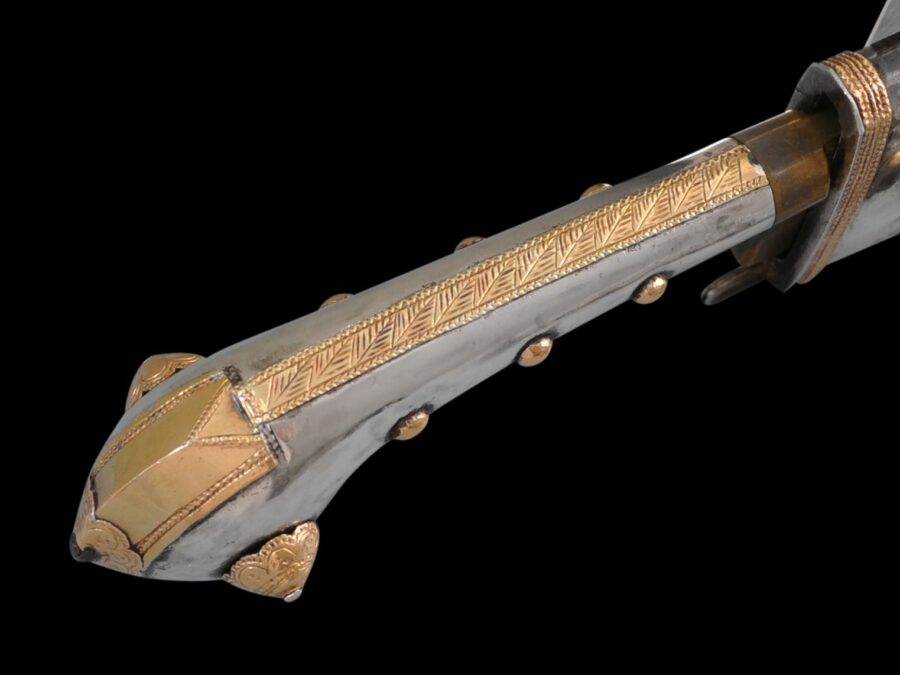This fine example of a pichangatti knife has a scabbard and hilt decorated in high-grade silver that has been partly overlaid with gold.
Pichangatti knives were the indigenous knives of the Coorg people of the Kingdom of Mysore in what is now Karnataka state. Such knives tended to be more utilitarian rather than for use in combat. They were carried in the front of the belt. This example is of typical form but is finer and in better condition than most extant examples. The iron blade is wide with a band of incised decoration. The hilt is of iron sheaved in silver sheet that is embellished with silver studs and rosettes.
The scabbard is of rosewood with silver mounts overlaid with gold – the two metals providing a pleasing contrast with one another. Motifs include daggers and a sun and crescent moon. The scabbard terminates with a well-cast, gold-overlaid, silver lotus bud. Elsewhere, the silver is decorated with applied twisted wire bands, overlaid with gold.
A thick chain of well-cast segments is suspended from a loop attached to the scabbard. This leads to a bell-shaped element with a fine silver tassel fringe that includes extremely fine red-glass beads. A further silver chain is suspended from this and to this is attached tools for personal grooming such as ear picks and nail cleaners.
Elgood (1995, p. 184) reproduces a watercolour of around 1850 held in the India Office Library, London, of a Coorg man dressed in traditional costume, holding a distinctive Coorg gun and with a Coorg knife not unlike this example in his waistband.
Overall, this pichangatti is one of the finest that we have seen – a similar example is illustrated in Stone (1961, p. 498), and another in Tirri (2003, p. 311). Examples also are rarely encountered, particularly compared with other types of knives and swords from the Indian sub-continent. One reason is because in response to an outbreak of violence near Malappuram in 1884, the local British administration confiscated all arms, seizing 17,295 weapons. The colonial Madras Museum selected a few of the better examples and the remainder were dumped into the sea (Elgood, 1995, p. 185).
The set is in fine condition. The blade is in good order and fits snugly into the scabbard. There is one tassel chain deficient to the fringe around the grooming tool support but this is barely detectable. Overall, this is a particularly fine example.
References
Caravana, J. et al, Rites of Power: Oriental Weapons: Collection of Jorge Caravana, Caleidoscopio, 2010.
Elgood, R., Firearms of the Islamic World: In the Tareq Rajab Museum, Kuwait, IB Taurus Publishers, 1995.
Stone, G.C., A Glossary of the Construction, Decoration and Use of Arms and Armor in all Countries and in all Times, first published in 1934, Jack Brussel, 1961.
Tirri, A.C., Islamic Weapons: Maghrib to Moghul, Indigo Publishing, 2003.


